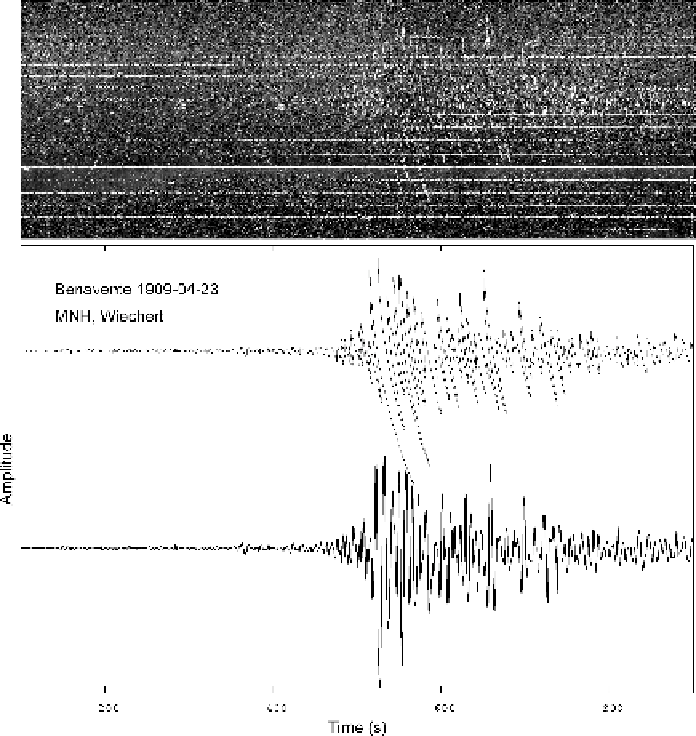Geoscience Reference
In-Depth Information
Fig. 2
To p
: Scanned image of the record of the N-S component of the Wiechert seismograph at
Munich seismic station for the 23 April 1909 Benavente earthquake, near Lisbon.
Upper trace
:
Raw digitized record.
Lower trace
: The same record corrected for arm length curvature and skew.
Note how the time mark (minute 50 in the seismogram image), clearly visible in the raw digitized
record at about 530 s, in this case remains almost invisible after geometrical correction
-
With an additional stylus, external to the recording stylus. They do not introduce
distortion on the record, but absolute timing problems may arise due to parallax.
-
Directly on the record: an electromagnet shakes the stylus or interrupts the record.
In both cases, part of the record is lost. In some cases (low frequency motion) it
is possible to ignore them. Schlupp (1996) introduced and tested linear predictive
filter to successfully reconstruct part of the missing signal after interpolation.
-
Finally, an electromagnet displaces the record line. The displaced fragment
should be reintegrated to the “unaltered” trace.

Search WWH ::

Custom Search